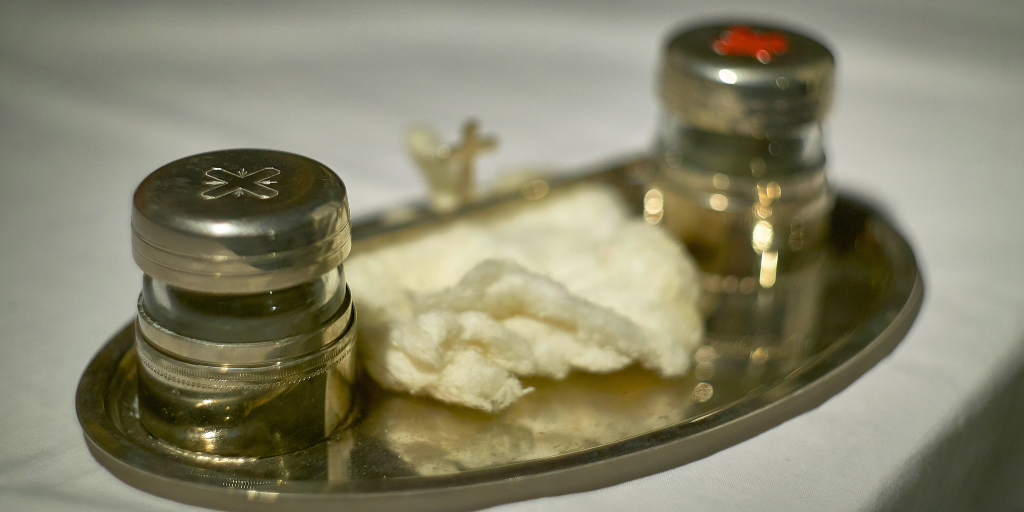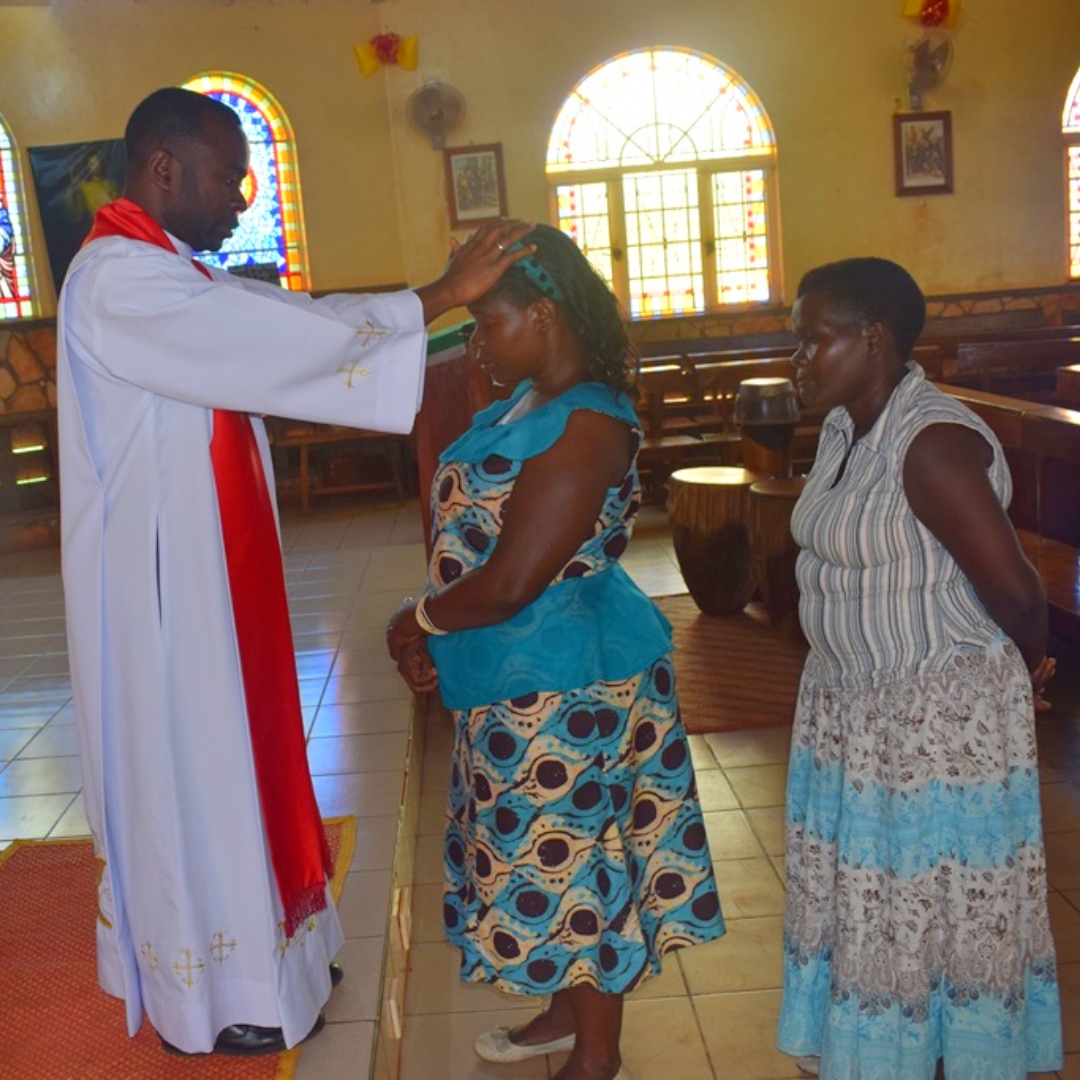
Have you ever wondered why children in your diocese are Confirmed at a different age than those in another state? Jane Korvemaker offers background info.
If you’ve encountered people with kids in other dioceses, you’ve likely noticed that there are differing practices for when the Sacrament of Confirmation is conferred, depending on where you live.
What gives? Can’t it all just be the same, everywhere?
Well, my friend, consider this an extraordinarily brief cheat sheet to the complicated history of this sacrament!
Two Principles
Our Church functions in a way that profoundly reflects a core trinitarian belief: unity in diversity. The Trinity is completely one and also completely diverse without compromising the other. Though it's difficult to understand how this works, we are nevertheless formed in the divine image and have something in ourselves and our institutions that can be perfected to embody these aspects of the Trinity.
This principle permeates much of what we see in our community of faith. Without understanding this it’s easy to see how one might think the Church functions in chaos. So this is the first principle: the Church holds and embodies unity in diversity, as best as she is able.
The second principle is to do with the bishop’s rightful authority: a bishop is the ‘moderator, promoter, and guardian of the entire liturgical life in the church committed to them,’ (Christus dominus). As such, he has the freedom to make pastoral decisions (such as the age of confirmation) that respect Church practice and adapt it to the local Church’s needs. We often see a diocese that has a tradition of confirming at a specific age, whether it is the ‘restored’ order (Baptism-Confirmation-Eucharist), halfway through the teenage years, or any stage in between. People generally dislike change, which may shed light on a pastoral reason for which many bishops do not stray from what has been previously done.

What Did Early Christians Do?
The Sacrament of Confirmation has always existed in the Church, though it was not separated nor called Confirmation until later. The current North American view, that it’s a sacrament of confirming one’s faith as an adult, would be completely lost on our Patristic Fathers. Rather, it was one part of a three-part rite of initiation. At the Easter Vigil, those who are entering the Christian faith are not only baptised, but also confirmed and receive holy Eucharist. There is no separation of these sacraments. This is what it was like in the early Church. The anointing of the newly baptised is the initiation into the life and mission of Christ, the Anointed One, through the Holy Spirit. One isn’t fully a member of Christ’s Body without the indelible mark made through chrismation.
What Happened?
‘So why the separation?’ you might ask. Nothing more or less boring than the logistics of travel. It’s worthwhile to note that this only happened in the West (a.k.a. the Latin rite). The Eastern churches, both Catholic and Orthodox, still practice all three sacraments of initiation at once.
The close, tight-knit Christian communities of the early Church were small enough that the bishop never used to be far from his flock. When the sanctions against Christianity ceased in the fourth century, there was suddenly a vast array of places where ministry was necessary. This posed an issue: the bishop could no longer preside over all the Baptisms of those committed to his care. The solution was to authorise the priests to baptise new members and the bishop would come later to confirm those baptised so that they could receive Holy Eucharist with the community.
Once the separation of Confirmation from Baptism happened, Confirmation became more and more estranged from its roots in the sacraments of initiation. The Second Vatican Council moved to clearly renew the connection of Confirmation to Baptism and the Eucharist for adults entering the Church. However, this movement didn’t address the renewal regarding children baptised while young, so its connection has remained rather muddy.
While parents act on their young child’s behalf for infant Baptism, as the child ages he or she must be formed well enough to be able to give their full age-appropriate consent to receiving sacraments. The younger the child, the less is required of them to be able to give that consent, and more of that responsibility lies on his or her parents.

What This Means Today
Essentially, conformity regarding age is not necessary, unity in diversity can be a reflection of the Trinity, and the early Church practice is different from today but confirmation is still one part of our three-part process of the sacraments of initiation (Baptism-Confirmation-Eucharist). Whew.
For a great read, you can see how pastoral practice regarding confirmation age can change between one bishop and the next through these two letters (partly down the page) written by the former bishop of St. Paul, Alberta, and his successor, respectively.
At what age does your diocese confer Confirmation?
Visit CatholicCentral.com for discussion questions about Confirmation to share with your kids after you watch this video together.
Copyright 2023 Jane Korvemaker
Images: (top) Canva; (center) copyright 2018 Holy Cross Family Ministries, all rights reserved; (bottom) Canva
About the Author

Jane Korvemaker
Jane Korvemaker loves food, family, wine, and God (perhaps not in that order). She holds a Certificate in Culinary Arts, which pairs perfectly with her Bachelor in Theology. A former Coordinator of Youth Ministry, she writes from the beautiful and cold province of Saskatchewan, Canada. She works from home and takes care of her three very hard-working children. Jane regularly blogs at AJK2.ca.


.png?width=1806&height=731&name=CatholicMom_hcfm_logo1_pos_871c_2728c%20(002).png)
Comments